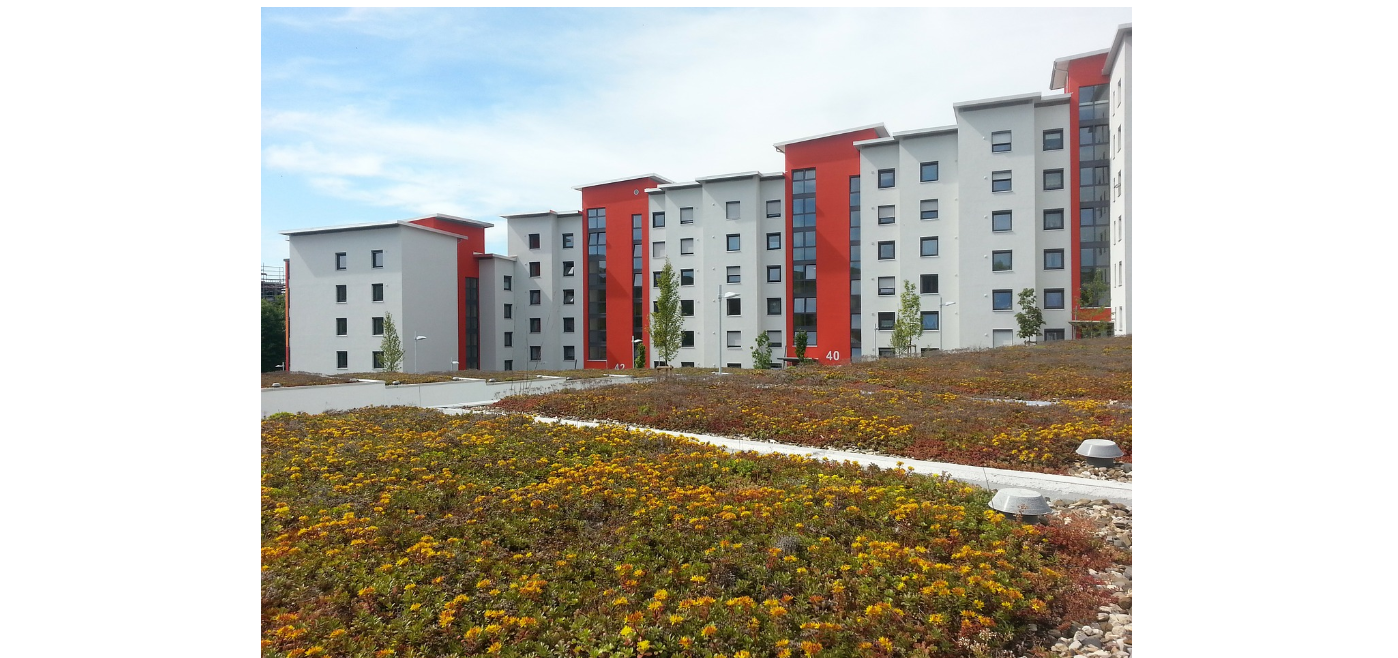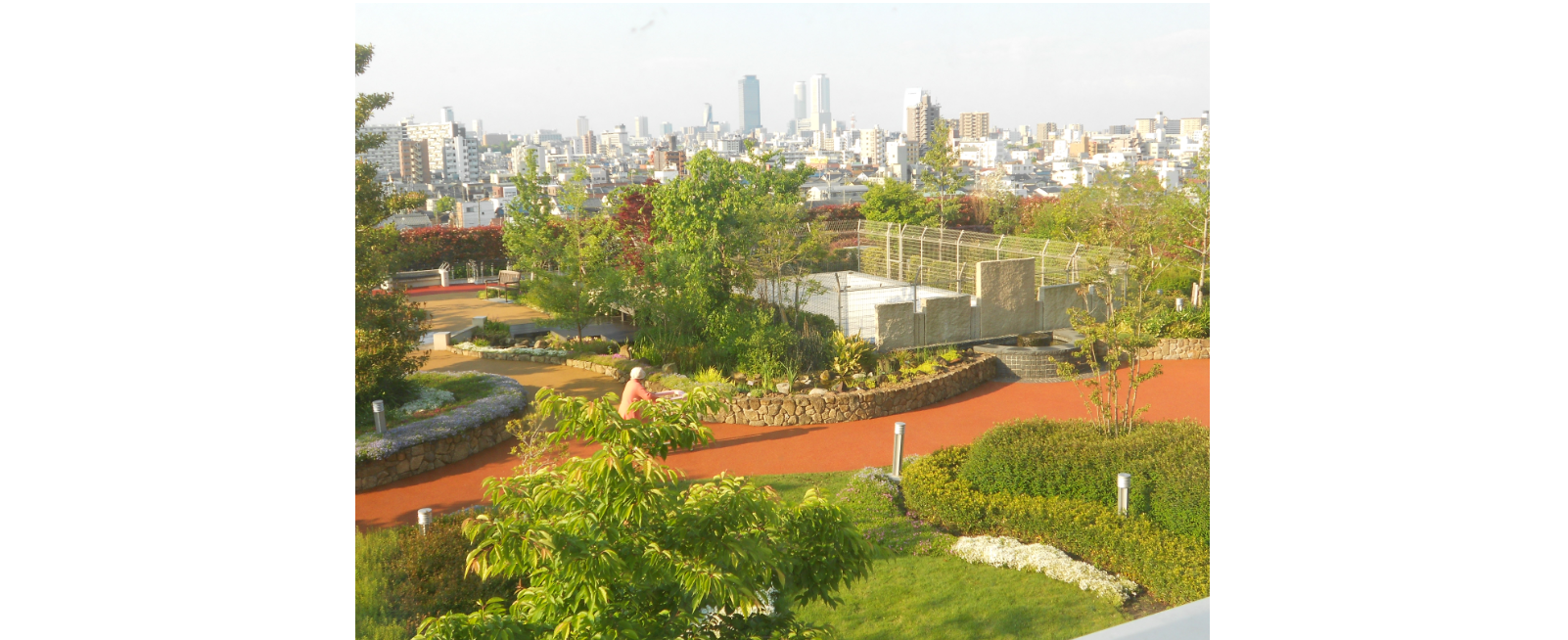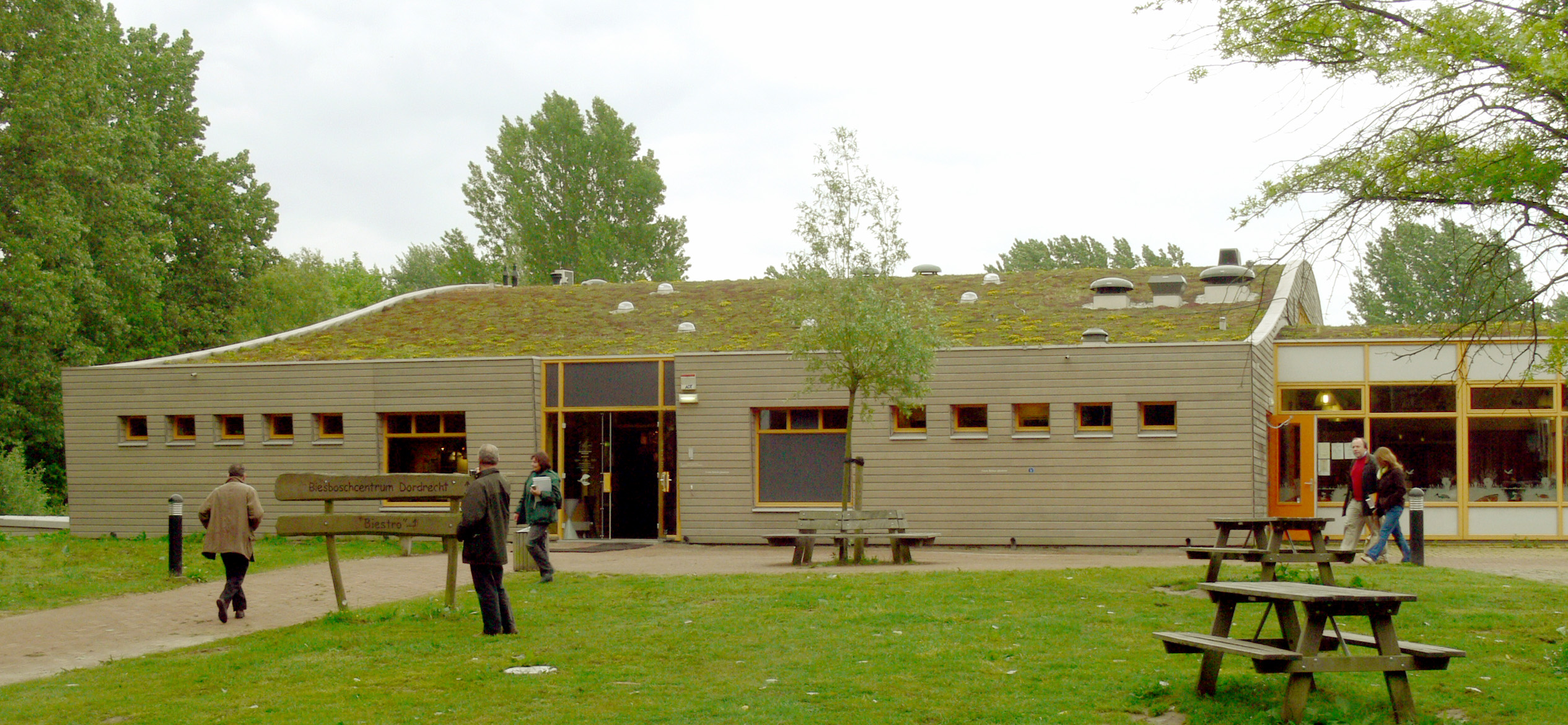Intensive roof and extensive roof are the two most popular types of green roof, and this article will helpyou to differentiate them. This article will give you the different aspects between them, especially helping you to consider choosing between the two if you need to install a green roof.

Source: Resitrix
The deep of the substrate
An extensive green roof usually has a growth of medium between 50 and 150 mm. In contrast, an intensive green roof will have a growing medium of between 150 and 1200 mm, which will sustain more significant vegetation. An extensive green roof typically has a shallow layer of soil that covers a broad field, while an intense green roof also has a deeper layer of the substrate, but limited to the smaller size. This is the best way to remember the distinction.
Extensive green roofs provide the soil depth for widespread plantings of small surface covers and wildflowers that look fantastic when they are flowering. For instance, on the office roof in Germany, the building below offers a layer of insulation, enhanced biodiversity and a source of food for bees and a nice view for others around

Source: Pixabay
Sadly it’s not always that easy. As green roofs have grown in number and variety, so does the diversity. The distinctions between an intensive vegetated roof and an extensive green roof have been confused. So it’s not as easy to identify them as intensive or extensive as it used to be - a green roof might be somewhere between these. This is why you may hear a green roof defined assemi-extensive or semi-intensive, considering this more comprehensive variety of green roof’s models.
The connection with human
Because the extensive roof’s soil dept are thin, it reduces the range of the plants which can be used on the top, thereby reducing the weight of the green roof on the construction site. Typically, foot traffic on large green roofs is not permitted due to the plant life’s shallow and fragile root zone. Many these kinds of a green roof are redesigned to existing buildings so that the structural support of the existing roof does not need to be enhanced or replaced.
Another measure of if it’s extensive or intensive is whether residents can reach the green roof. If we occasionally refer to our green roofs as rooftop gardens, it is a sign that this type of green roof is intended to be used by citizens. In this case, it is more likely being an intensive green roof, with pavements areas, chairs and undercover areas incorporated as you may find in an ordinary garden. These “top floor gardens” can withstand pedestrian traffic and bring an aesthetic value to buildings, truly indistinguishable amenity spaces from the ground gardens – with the exception of the view. This imposes a massive load of dead and live weight on the building’s roof, which requires further structural support.

Source: Wikimedia Commons
Read more: Research about 8 benefits of green roof
Types of plant
Naturally, extensive and intensive vegetated roofs contribute themselves to many kinds of plants. An extensive green roof’s shallow soil is suitable for ground coverings, grasses, succulents, and sedum. Of course, the selection of plants will also depend on the purpose of the green roof. Local vegetation and even gravel and bark areas (what is known as a ‘brown roof’) provide the ideal habitat for local birds and insects if it is to preserve local biodiversity. Although, if built to protect the construction from the summer heat, the covering leaves of a dense and hardy ground cover may be more reasonable. Nevertheless, in extensive green roofs, the shallow depth of the substrate means that it can dry out quickly, so drought-tolerant plants are suggested.

Source: Wikibooks
The substratum depth on intensive rooftop gardens is ideal for a wider variety of plant species such as bushes and even trees. Given the correct substrate depth, practically anything can be developed on an intensive green roof, but, like any greenhouse, it pays to be mindful of how large the plants you are choosing will grow and what situations they can withstand.
Read more: Answering 5 myths of green roof
Palm Landscape
Hotline: 090 858 0033 | 098 959 0808
Email: contact@palm-landscape.com
Website: www.palm-landscape.com
Facebook: facebook.com/palmlandscaper
Instagram: www.instagram.com/palm.landscape/
Reference
Kosareo, L., & Ries, R. (2007). Comparative environmental life cycle assessment of green roofs. Building and environment, 42(7), 2606-2613.
Hossain, M. A., Shams, S., Amin, M., Reza, M. S., & Chowdhury, T. U. (2019). Perception and barriers to implementation of intensive and extensive green roofs in Dhaka, Bangladesh. Buildings, 9(4), 79.